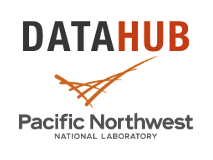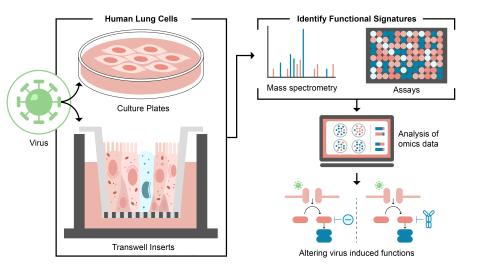Category
Description
Human Liver Epithelium Response to HCoV-229E Infection Epigenomics (ACS-DP4)
The purpose of this experiment was to evaluate how wild-type Human coronavirus strain 229E (HCoV-229E) infection alters chromatin accessibility in infected cells. Sample data was obtained from mock-infected cells, UV-inactivated virus treated cells, and replication competent HCoV-229E infected immortalized human liver cells (HuH7) at 24 hours post infection. Samples were processed using assay for transposase-accessible chromatin using high-throughput sequencing (ATAC-seq) methods for reported bar coded libraries. Sample data was acquired using an Illumina HiSeq 2500 sequencer system and further processed for ATAC-Seq expression analysis.
Accessible Digital Data Downloads
The repository contains the following folders and files:
- Experimental_Metadata: Folder with additional information to understand the experimental data
- Raw Counts: Folder with files containing the sequence counts across all samples
- Processed Data: Folder with files containing normalized sequence counts and differential expression statistics
- Legal: Additional files with legal information
Total Download Size: 4.1 MB, zipped
Linked Primary Data
Primary RNA-Seq raw measurement data are openly accessible for download at the Gene Expression Omnibus (GEO) community repository under the accession GSE280627 and have been linked to corresponding primary experimental datasets where applicable.
Funding Acknowledgments
The research data described here was funded in whole or in part by the Predictive Phenomics Initiative (PPI) at Pacific Northwest National Laboratory (PNNL). This work was conducted under the Laboratory Directed Research and Development Program at PNNL. PNNL is a multiprogram national laboratory operated by Battelle for the DOE under Contract No. DE-AC05-76RL01830.
Citation Policy
In efforts to enable discovery, reproducibility, and reuse of PPI-funded project dataset citations in accordance with best practices (as outlined by the FORCE11 Data Citation Principles), we ask that all reuse of project data and metadata download materials acknowledge all primary and secondary dataset citations and corresponding journal articles where applicable.
Data Licensing



